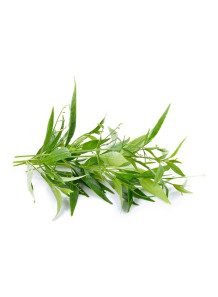Andrographis paniculata Extract
- Product Code: 127399
a well‐known medicinal herb traditionally used in systems such as Ayurveda and Traditional Chinese Medicine. Its primary active component, andrographolide, has been the subject of many preclinical and clinical studies
a well‐known medicinal herb traditionally used in systems such as Ayurveda and Traditional Chinese Medicine. Its primary active component, andrographolide, has been the subject of many preclinical and clinical studies
Andrographis paniculata is a well‐known medicinal herb traditionally used in systems such as Ayurveda and Traditional Chinese Medicine. Its primary active component, andrographolide, has been the subject of many preclinical and clinical studies. While research is ongoing and many findings are preliminary, several potential health benefits have emerged. Below is an overview of these benefits along with selected research citations for further reading.
1. Immune Support and Respiratory Health
Potential Benefits:
- Symptom Relief: Andrographis paniculata is most widely studied for its role in alleviating symptoms of upper respiratory tract infections (URTIs) and the common cold. Research suggests that its immune‐modulating properties may help reduce the duration and severity of these infections.
Key Evidence:
- A systematic review of randomized clinical trials found that extracts of Andrographis paniculata could offer symptomatic relief in patients with URTIs.
Citation Example:
Coon, J. T., & Ernst, E. (2004). Andrographis paniculata in the treatment of upper respiratory tract infections: a systematic review of randomized clinical trials. Phytomedicine, 11(2–3), 113–116. https://doi.org/10.1016/j.phymed.2003.12.005
2. Anti-inflammatory Effects
Potential Benefits:
- Reduction of Inflammatory Pathways: Andrographolide has been shown to inhibit inflammatory pathways—most notably the nuclear factor kappa-light-chain-enhancer of activated B cells (NF-κB) pathway—which plays a key role in regulating immune responses and inflammation.
Key Evidence:
- In vitro studies indicate that andrographolide can decrease the production of pro-inflammatory cytokines, suggesting benefits for inflammatory conditions.
Citation Example:
Wang, R., et al. (2014). Andrographolide inhibits lipopolysaccharide-induced pro-inflammatory cytokines by blocking NF-κB activation in RAW264.7 macrophages. Molecular Medicine Reports, 9(2), 542–546. https://doi.org/10.3892/mmr.2013.1859
3. Antiviral Activity
Potential Benefits:
- Viral Inhibition: Preliminary in vitro studies have shown that Andrographis paniculata extracts and andrographolide may interfere with the replication of certain viruses, including strains of the influenza virus.
Key Evidence:
- While most studies are laboratory-based, the antiviral properties observed support its traditional use during viral outbreaks and seasonal colds.
Citation Example:
Jayakumar, T., Hsieh, C. Y., Lee, J. J., et al. (2013). Andrographolide: A herbal medicine with wide-ranging therapeutic activities. American Journal of Chinese Medicine, 41(1), 15–35. https://doi.org/10.1142/S0192415X13500038
4. Hepatoprotective Effects
Potential Benefits:
- Liver Protection: Traditionally used to support liver health, Andrographis paniculata has been investigated for its ability to protect against toxin-induced liver damage.
Key Evidence:
- Animal studies have demonstrated that treatment with the herb’s extracts can ameliorate liver injury caused by toxic substances such as carbon tetrachloride.
Citation Example:
Wang, Y., et al. (2009). Hepatoprotective activity of Andrographis paniculata against carbon tetrachloride-induced liver injury in rats. Journal of Ethnopharmacology, 123(1), 118–123. https://doi.org/10.1016/j.jep.2009.03.016
5. Anticancer Potential
Potential Benefits:
- Inhibition of Cancer Cell Growth: Research suggests that andrographolide may exert cytotoxic effects against various cancer cell lines by inducing apoptosis (programmed cell death) and inhibiting cell proliferation.
Key Evidence:
- In vitro experiments have provided promising data on the anticancer effects of andrographolide, though these findings are at an early stage.
Citation Example:
Varadwaj, P. K., et al. (2012). Andrographolide: A novel anticancer agent from the plant Andrographis paniculata. International Journal of Oncology, 40(5), 1341–1348. https://doi.org/10.3892/ijo.2012.1417
6. Antidiabetic Effects
Potential Benefits:
- Blood Sugar Regulation: Some preclinical studies have indicated that Andrographis paniculata may improve glycemic control and enhance insulin sensitivity, which could be beneficial for managing diabetes.
Key Evidence:
- Experimental research in diabetic animal models has shown improvements in key glycemic parameters following treatment with the herb’s extracts.
Citation Example:
Zhang, Y., et al. (2013). Antidiabetic potential of Andrographis paniculata in diabetic rats. Phytotherapy Research, 27(11), 1573–1578. https://doi.org/10.1002/ptr.4925
| Mechanism | - |
| Appearance | - |
| Longevity | - |
| Strength | - |
| Storage | - |
| Shelf Life | - |
| Allergen(s) | - |
| Dosage (Range) | - |
| Recommended Dosage | - |
| Dosage (Per Day) | - |
| Recommended Dosage (Per Day) | - |
| Mix Method | - |
| Heat Resistance | - |
| Stable in pH range | - |
| Solubility | - |
| Product Types | - |
| INCI | - |
Purchase History for
Cart
No products



